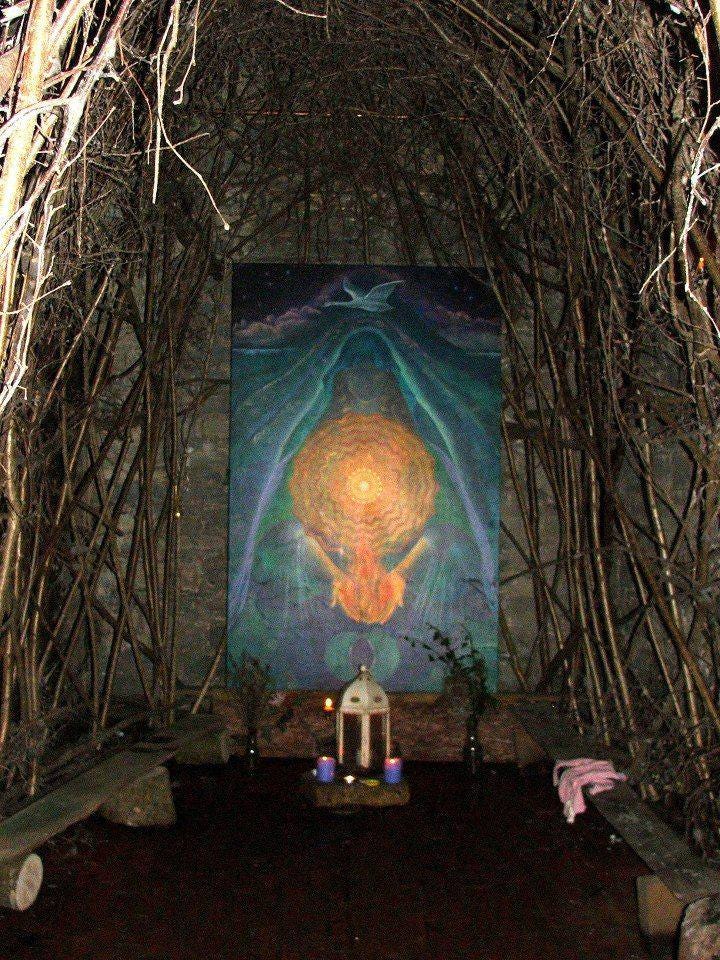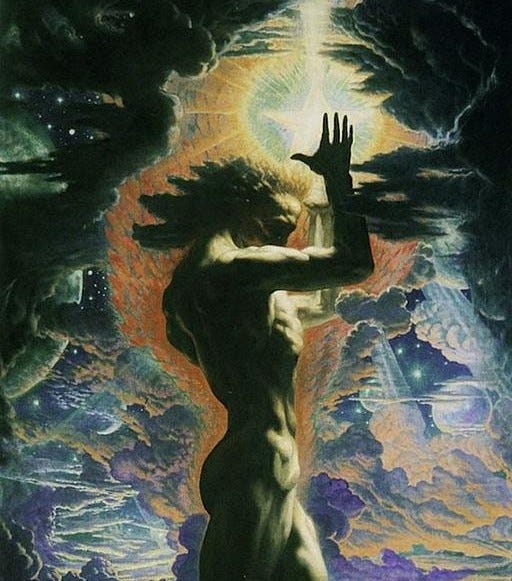The defining feature of the New Age, is that is it difficult to pinpoint any defining features at all – at least not in the way an established religion like Roman Catholicism has.
If we start where the New Age purportedly began, with Western Esotericism, from early Gnosticism, Rosicrucianism and later Freemasonry and Theosophy (co-founded by Helena Blavatsky) we can find a thread which runs through it all and leads to modern examples such as Wicca but also to a newer manifestation that centres loosely on healing and self-actualisation and is predicated on a plurality of truths that are vague and varying.
Much like the post-modern theories, practitioners often aren’t entirely aware of the history surrounding the New Age phenomenon – a comparison can be made between the concepts of ‘queering’ and ‘rewilding’ – both point to the ‘de-construction’ of allegedly oppressive narratives for the purpose of muting personal responsibility. The umbrella of gnostic ideas overarches the premise of an ‘ageless wisdom’ that can be found as pieces of a puzzle in all religions (especially Eastern), it is in essence difficult to obtain, but salvation comes with the understanding of matter as an illusionary prison and the spirit as the means to break free through spiritual experiences and practices. This lends itself to the themes of paradigm shifts and awakening and is the basis of the myriad modalities available.
Many ‘new-agers’ are seeking a transformative experience and connection with the raw nature of what they call ‘life-force’, this is innate and human despite leading them to chasing their own tail because they have put the ‘self’ at the centre.
Helena Blavatsky and the Occult Revival of the 19th Century influenced feminism and other progressive movements and vice versa due to a shared rejection of Christian morality and the ‘Patriarchy’. It is interesting to note that a later well known Theosophist, Alice Bailey, created the Lucis Trust (formerly Lucifer Publishing), an Occult non-profit publishing company that is directly associated with the Sustainable Development goals of the 2030 UN agenda, who seem to posit population control as an ecological solution. Blavatsky preached the idea that Lucifer was a Promethean saviour figure to humanity: “Lucifer, or ‘Light-Bearer’, is in us: it is our Mind – our tempter and Redeemer…”, while others have suggested that Lucifer and Christ are twin dualistic figures or furthermore that they represent elements of our own psyche. This is where psychology has blended with spiritualism over time, the Jungian concept of ‘Shadow work’ is widely promulgated among the New Age.
Before converting, I considered myself broadly ‘pagan’, but upon hindsight, I’d say my spiritual approach was rather closer to the New Age than I would have liked to admit, due to the syncretic application of multiple cultural traditions. Traditional paganism was the innate expression of human relationship to the natural world but couldn’t sincerely be said to be practised by modern Westerners.
In truth Neo-Paganism overlaps with the New Age in that its expression now leans toward animism and the relation of archetypes to deities or spirits. However, unlike fairly progressive New-agers many neo-Pagans focus on historical Paganism related to their ethnic origins, this usually manifests as a more conservative world-view despite maintaining a general anti-establishment sentiment.
“There is no need to “believe” in Jupiter or Wotan—something that is no more ridiculous then believing in Yahweh however—to be pagan. Contemporary paganism does not consist of erecting altars to Apollo or reviving the worship of Odin. Instead it implies looking behind religion and, according to a now classic itinerary, seeking for the “mental equipment” that produced it, the inner world it reflects, and how the world it depicts as apprehended. In short, it consists of viewing the gods as “centres of value” and the beliefs they generate as value systems: gods and beliefs may pass away, but the values remain.” – Alain De Benoist, On Being a Pagan
The Vatican describes the typical New Age approach as a “transpersonal psychology, whose main concepts are the Universal Mind, the Higher Self, the collective and personal unconscious and the individual ego. The Higher Self is our real identity…” and collaboration with our Higher Self (aka Authentic Self) and often other spirits or ‘energies’ is how we tap into Divine wisdom. According to practitioners however, the process is a journey through ones own blockages that need to be dismantled through various practises, this is often where it becomes a competition of self awareness and a vehicle for popular gurus to sell their secret knowledge via workshops and retreats, although they often market this as ‘serving’ rather than selling. It then becomes all the more important to become conscious of your own trauma, internalised self hatred and conditioning – this is where it is again reminiscent of “woke” ideologies – the need to practice ‘decolonising’ and what is consistently called ‘work’: shadow work, womb work, light work, ancestral work, goddess work as well as somatic/grief healing, manifestation, meditation and cleansing.
Not much has changed since the 1960s, and unsurprisingly sex and tantra are still key elements as are hallucinogenic experiences induced through entheogens, breathwork or ecstatic dance.
Despite the lack of belief in sin, it seems that there is no end to the need for healing; salvation is gained through ones own actions, integrating shadows and clearing blockages and complete freedom from shame, which we have inherited from our mothers and societal conditioning. In some ways then, the New Age has perhaps moved with the times and become a cult of self-help as well as resembling prosperity gospel movements through the idea that we create our own reality – and any criticism is but a reflection of your own unhealed wounds.
“There is no such thing as giving the body without giving the soul… The separation of soul and body is death. Those who separate sex and spirit are rehearsing for death.” – Bishop Fulton Sheen
Bishop Sheen is talking about promiscuity and how we cannot separate sexual union from emotional and spiritual connection, it draws on the point that the body is not a prison nor is it inferior to the spirit, or else why would it have been necessary for Christ to have suffered and been sacrificed? What would be the need for us to consume His body and blood in the Eucharist? It makes all the more sense that in New Age rationale sex is considered the liberator when the body is considered a trap.
Amongst New-agers there is a theme of divine masculine and feminine energies that can be actualised or channelled through sexual activity, names that reoccur and are used interchangeably are Shakti, Shiva, Black Madonna, Magdalene and Eros.

There is great emphasis on self worship or embodiment as a means of releasing shame and trauma which then allows the spirit to move freely. This can include sacralising the taboo such as menstruation, masturbation and even abortion. This is reminiscent of the broadly Gnostic concepts of Theosophy – matter as obstacle through the lens of pantheism with the language of psychotherapy. The Vatican noted that this involves “a rejection of the language of sin and salvation, replacing it with the morally neutral language of addiction and recovery.”
Furthermore, in place of contrition, confession and reconciliation, there are therapists and gurus of all stripes to lend an ear and offer convoluted wisdom, but not absolution. This idea of self-worship and shamelessness can only lead to hedonism and destructive behaviours, but when it suits there can be an air of therapist-like emotional detachment from a situation whereby responsibility for actions is deflected because the personal equilibrium must be guarded, this is exhibited in an arrogant Buddhist-like spiritual superiority.
The overarching difference between the New Age mystical approach and the Christian, is that enlightenment and unity with a Godhead or the Cosmos is achieved by working out how to let go of the clingy heaviness of matter and ‘ascending’, whereas in Christian mysticism God descends, is born and “pitched his tent among us” (Jn 1:14), therefore salvation is a gift to all, but particularly to those who try to be humble rather than those who have obtained a secret doctrine for the few.
I found that my anxiety worsened the more I tried to collect practices; I think this is because this is actually self centred-ness, often online therapists might encourage people to be selfish, ‘for the sake of others’ – this is becoming self absorbed, in my experience this is never a way to crack out of internal torment.
The inexhaustible fount of wisdom, Bishop Sheen, said that we pull ourselves out of neuroticism by putting others before ourselves, by loving our neighbour (or just the people we see). This isn’t to say we should neglect our own needs, but as my husband’s grandmother often said, a generous woman: ‘...just paying it forward’, hence through charity there is gratitude. However, within the New Age there is a practice of gratitude as a way of becoming ‘magnetic’ to fortune, made popular via a book called ‘The Secret’ by Rhonda Byrne, this is essentially an attempt at circumventing the charity aspect, so it still all boils down to the self, and therefore selfishness.
Blavatsky thought that the serpent was ennobling man by sharing with him his pride and desire to be like God, in the New Age you may come across this idea that humanity are co-creators with the Divine and certainly the catechism says that God does want unity with Mankind; Christ was born into this world in a stable and died amongst criminals for our salvation and so we are called to be Christ-like by humbling ourselves – the antithesis of the New-Age doctrine of the self.
“How art thou fallen from heaven, O Lucifer, son of the morning! how art thou cut down to the ground, which didst weaken the nations!
For thou hast said in thine heart, I will ascend into heaven, I will exalt my throne above the stars of God: I will sit also upon the mount of the congregation, in the sides of the north:
I will ascend above the heights of the clouds; I will be like the most High.” - Isaiah 14:12-14




Thank you for writing this. It untangles the mess of new age ideas and lays them out in a way that shows them for what they are: a convoluted journey away from God.
I think you can see the effects of Kant’s phenomena/noumena distinction in what you’re describing. We only ever experience stuff in our head, never what actually exists.
The problem is people want to know what exists. So if your epistemology denies access to reality, then you’ll seek it elsewhere. The two sides of that coin are a reductive materialism (closed system) or reaching behind the phenomenal veil for “whatever is there” (open system)